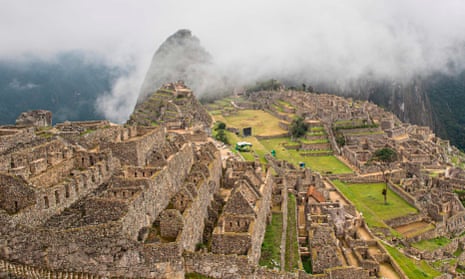A scientific discovery about Machu Picchu has cast doubt on the reliability of colonial records for modern western historians trying to piece together an understanding of the Inca people who built the site.
For more than 75 years, many historians and scientists have worked on the assumption that the famous site in Peru was built some time after AD1438. This was based primarily on 16th-century Spanish accounts from their conquest of the region. However, enhanced radiocarbon dating techniques carried out on remains have now found it could be at least two decades older.
“The results suggest that the discussion of the development of the Inca empire based primarily on colonial records requires revision,” said the lead author of the research, Prof Richard Burger from Yale University.
“Modern radiocarbon methods provide a better foundation for understanding Inca chronology than the contradictory historical records.”
The historical site is one of the most well-known in the world, yet its past and the people who used it remain among the more mysterious to western historians.
The ancient citadel would typically attract more than a million visitors each year. Yet developing an understanding of its detailed history has been made more difficult by huge cultural differences, such as a lack of contemporary historical records inscribed in a way that would have been recognisable to Europeans.
To tackle this, Burger led a team of US investigators in carrying out accelerator mass spectrometry (AMS) dating of human remains from Machu Picchu.
They examined the remains of 26 individuals and the results, published in the peer-reviewed journal Antiquity, strongly suggested continuous use of the site from 1420 at the latest – and probably earlier – until 1530. The latter date would roughly coincide with the start of the Spanish conquest of the Inca empire.
“This is the first study based on scientific evidence to provide an estimate for the founding of Machu Picchu and the length of its occupation,” said Burger, adding that earlier such attempts did not produce sufficiently reliable results.
There is some debate among academics about the relative values of historical and archeological records in developing historical narratives. “Inca chronology is a matter of debate among archaeologists and historians,” Dr Gabriela Ramos of Cambridge University said.
“Dating Inca sites is subject to speculation because written accounts and archaeological evidence do not always correspond. For decades, historians and anthropologists have relied mostly on written accounts and it is rather recent that archaeological findings, use of radiocarbon dating, and other techniques are contributing to, add to or change our understanding of pre-Columbian societies.
“The fact that very few Inca tombs have survived – because of looting – and, overall within Andean archaeological research, the fact that the Inca period is the least studied [mean that] we still don’t know as much about the Incas as we do about their predecessors.”
Dr Trish Biers, an osteologist at the same institution, said colonial records are important to our understanding of what was witnessed by the Spanish at the time. But that they were “heavily influenced by political propaganda, religious superiority, and the overall subversive voice of the Spanish Empire, which had its own glittering agenda”.
She said: “Scientific methods, particularly on human remains, can give us insight into what the people were experiencing – for example, diet, disease and labour – on both an individual level and population level. Which is pretty cool.”
Ramos stressed that dismissing historical records in favour of scientific techniques alone would not be beneficial. “Without an understanding of the rationale behind Inca politics, Inca religion and the way in which the Inca related to conquered and allied populations – all described in written sources – archaeology would be of little use or would be too difficult for scholars to interpret and contextualise their findings.”
Machu Picchu, now a Unesco world heritage site, is believed to have been used as a country palace by the Inca. Work published in 1945 by the historian John Rowe suggested the date many academics thereafter accepted as the most likely for its construction.
It was based on the belief that the Incan emperor Pachacuti conquered the lower Urubamba valley – the area of what is now Peru that includes Machu Picchu – in 1438 and that construction likely took place between around 1440 and 1450.
